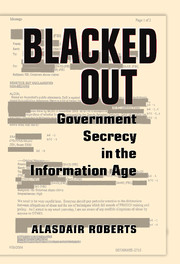8 - Remote Control
Published online by Cambridge University Press: 05 June 2012
Summary
The restructuring of public services over the past two decades reminds us that power is fluid: It flows easily from one place to another. For the preceding thirty years, the main preoccupation of legislators and nongovernmental organizations had been finding ways of maintaining control over growing national bureaucracies. A number of devices – including disclosure laws that allowed citizens to share in the task of oversight – were invented to provide a check on bureaucratic power. But just at the moment when these checks had been established – and in part, because these checks had been established –the locus of power began to change. Authority flowed from public bureaucracies to purportedly private actors, whose work began to provoke, in some quarters, the same complaints about abuse and opacity that had once been lodged against the bureaucracy itself.
This is not the only sense in which power has diffused away from the traditional structures of governance. Increasingly, decisions over a broad swath of national policies are influenced by decisions taken within supranational institutions – new structures for the negotiation and enforcement of multilateral agreements on matters once resolved by national or subnational governments alone. Britain's “metric martyrs” – storekeepers arrested for selling produce by imperial weight rather than by the metric weight required by the European Union – were contending with the influence of new supranational institutions.
- Type
- Chapter
- Information
- Blacked OutGovernment Secrecy in the Information Age, pp. 171 - 196Publisher: Cambridge University PressPrint publication year: 2006

